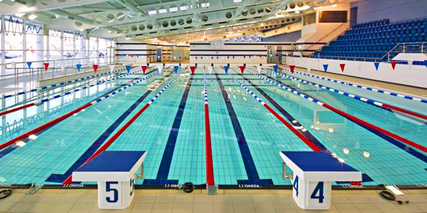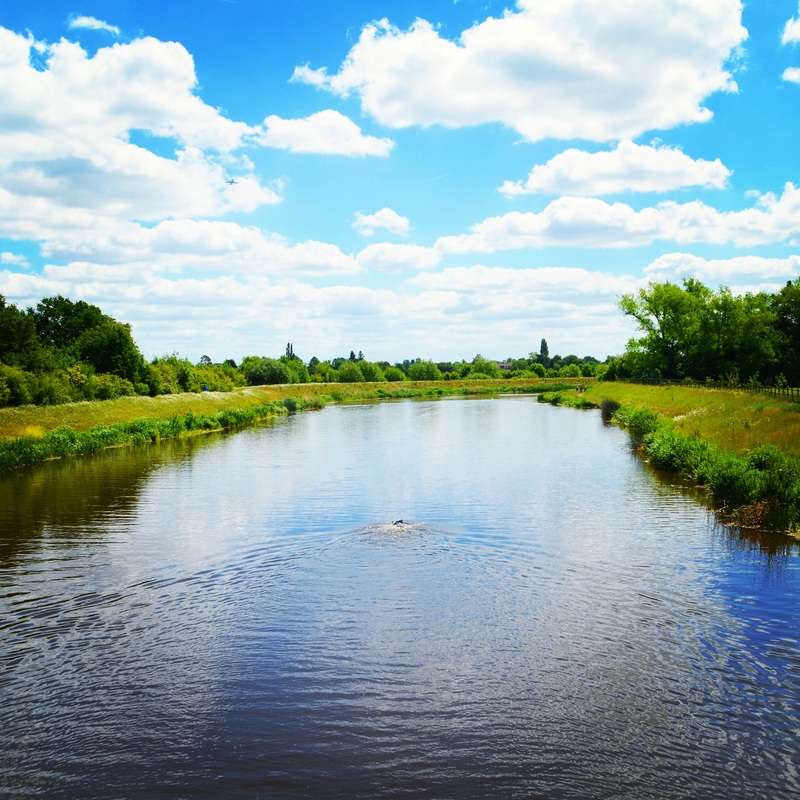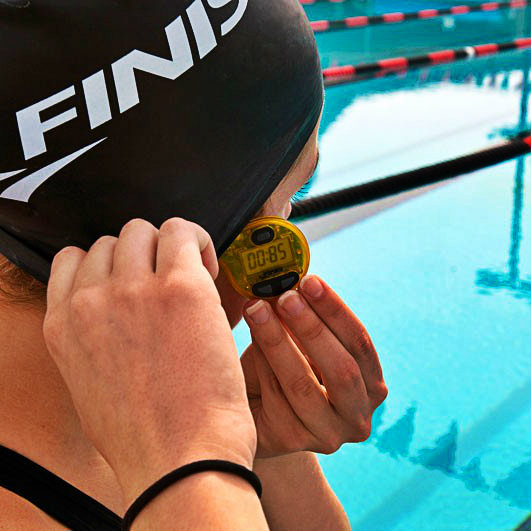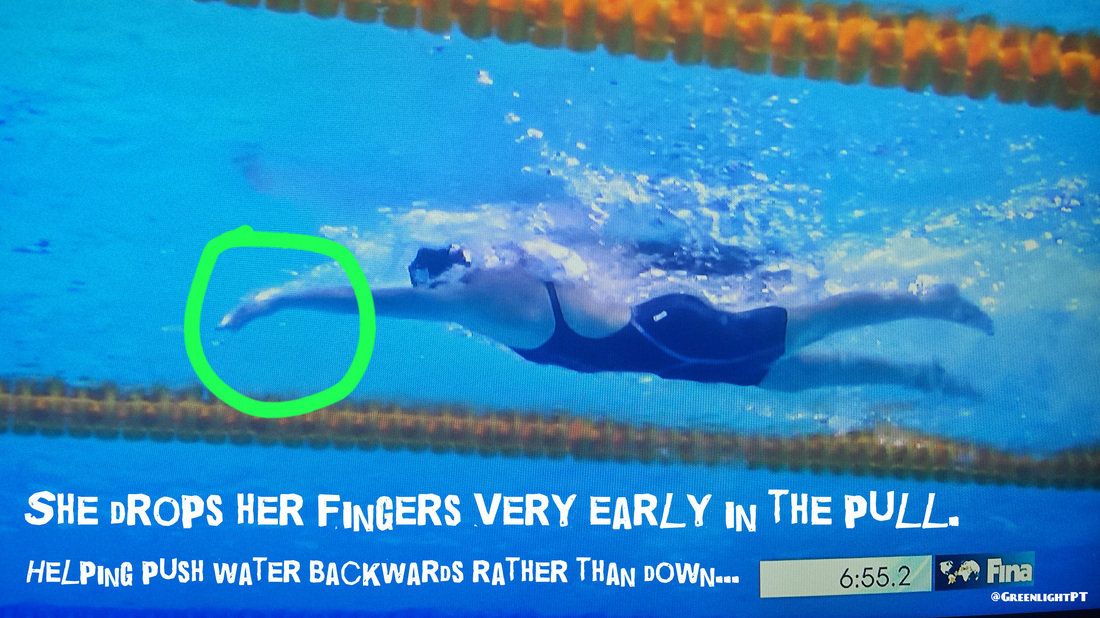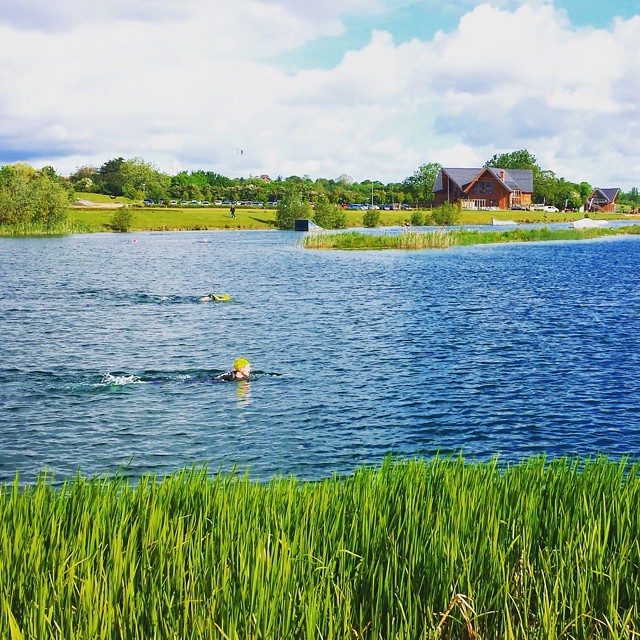|
Its getting to that time of year again when the lakes are warming up and its time to start introducing some open water training into your schedule. In this short blog I will look at the benefits of both pool and open water training and look at how much of each I think you should be doing, and what you should be doing in them. Lets start with a quick look over the positives and negatives of each:
Pool Advantages:
Open Water Advantages:
I often ask this question to people...
'What does your typical open water training session consist of?' This is the answer 90% of the time... 'I swim 2-3 steady laps.' Personally, I can't think of a swimming session that has any less focus on improving your performance! So what should we be doing? With pool training, most swimmers with a good coach or training programme, tend to have structure to their sessions. We might work on speed, technique or endurance at certain parts of the session, or focus on a particular technique aspect. In open water, its very common for people to just get in and 'plod'. Top triathletes and even elite open water swimmers do very little of their training in open water. Once you are comfortable swimming open water there is little benefit from training in it over the pool. Obviously for a swimmer new to open water, we definitely need to be getting down the lake and getting comfortable.
My advice for open water training:
Make it specific!
How much Open Water should I be doing?
Depending on your experience I'd recommend the following: If swimming 2 times per week = Err swim 3 times per week! If swimming 3 times per week = 2 pool + 1 open water If swimming 4 times per week = 3 pool + 1 open water If swimming 5 times per week = 3 pool + 2 open water When should I start my Open Water training? There is a VERY simple answer to this... When you can swim comfortably enough to do something productive! Absolutely no benefit of rushing down there all excited in the first few weeks, swimming 200m, and getting out like a shivering wreck. If anything you are going to give yourself a bad experience and make things harder. Start your open water training when its warm enough to make sure you can breathe properly, stay in long enough to do something productive and most of all ENJOY IT!
6 Comments
Lets face it. We all need a kick up the ass to get out our front door and train from time to time. Maybe its 5am and that snooze button is looking tempting. Maybe its cold and raining. Maybe you aren't performing at the level you were last year. Maybe you've just been dumped by your partner who for some reason doesn't think its acceptable to spend £7000 on your 'winter' bike. Whatever the reason, these 5 videos are sure to get you fired up and back to training at your best....
1. RULE YOURSELF | MICHAEL PHELPS2. IRONMAN - Be Inspired3. Rise and Swim (Welcome to the Grind)4. Running in the Rain5. Biggest Loser Matt Hoover finishes Ironman TriathlonWhat is this?
A challenging festive themed swim session to try over the Christmas period! You can do this by yourself or as part of a swim squad! It will take around 1 hour including your warm up!
What do I need?
...and probably some swimwear too. We'd recommend that. Nice red festive swimwear if you have some.
How do I get ready?
1. You need to know your CSS pace. If you don't know that you can find out here:
http://www.swimsmooth.com/css-calculator.html 2. Turn your Tempo Trainer onto 'Mode 1' and key in your CSS pace per (25m) length. Example: If your CSS pace per 100m is '1:56' you divide by 4 (lengths) and need to have '29:00' displayed on the Tempo Trainer Warm up:
Something like this will do. Shorten the distances if you need to...
200m - Easy Swim 200m - Side Kick With Fins (Swap sides each length) 200m - Half a length sculling into half a length easy swim 200m - Start the 200m slow and build up to a fast finish Main Set:
|
|
SUMMARY...
The above tips should help you reduce your open water panics and teach you how to cope with them should they arise! Remember... The more you practice and prepare for this, the less it will happen. Please feel free to 'share' this blog with your swimming and triathlon buddies. Adam Gibson Head Coach GreenlightPT |

If I had a pound for every time a triathlete asked me how they can improve their swim... I'd probably be able to afford my own swimming pool. (One day ...eh!)
So...if you want to know how to knock a hefty 20% off your swim time (potentially more) keep on reading. If you want to continue plodding up and down the pool quite aimlessly - then this is probably your exit point.
So, how hard can it be? You are in reasonable shape (hopefully!?) and you have confidence in the water, why can't you swim like you can run and bike? The answer is actually a very simple one.
Run lots and you will inevitably get faster. Structure your run sessions and you'll improve even more. Same goes for cycling. But swimming is a completely different beast. It's all about your technique.
One late summer's evening in August 2012 I was competing at Box End Evening series triathlon. I exited the water comfortably in 1st place, with a 40 second lead. I'm overtaken a little while later by a young Tom Stead. Tom came past at a completely different speed and went on to win the race by almost a clear minute. My thoughts...imagine what this boy is capable off if he improves his swim!
Despite Tom being a reasonably good swimmer to start with, the reasons why he improved so much in one year translate to every level of swimmer.
The 4 steps to improving...
First step.
Find your current level. Time yourself over 400m but if you can't manage that time yourself over 100m. Still struggling...okay 25m will do. Time isn't important here, everyone starts somewhere. This is a base reading so we can measure the awesomeness of your improvements.
October 2012 -Tom's 400m = 6:40
Second Step. Get a coach to assess your swimming, not just anyone, your mum/dad/know it all friend will not do here. You need to know exactly what YOU personally are doing wrong. This will vary massively person to person and won't be picked up in a group session. You may think in your head you are swimming along like Michael Phelps, in reality you might look like a drowning moose, but hey, its a starting point right. Your stroke issues will be unique to YOU. When I assess someone I like to give them the 3 most important issues to work on, we can address the next 3 issues when the first 3 are fixed! (keep it simple here guys!)
Few things I immediately picked up for Tom to improve: Head position too low, slight scissor kick, elbow dropping during pull. So... no drowning moose, but plenty to work on.
Third Step. Get a structured training programme that is specific to your swim stroke issues and your current swim level (we just figured both these in step one and two! Told you this was simple).
Fourth Step. (The easy part I think!?) Bust your ass training in the pool 3/4/5/6 times per week. Make an effort to actually correct the stroke issues, this is key. The people that correct the stroke issues are ALWAYS the people that knock off the most time. Continue your aimless plodding and you will continue to plod. Coached sessions with similar ability swimmers is your ideal environment.
Practice doesn't make perfect...PERFECT PRACTICE MAKES PERFECT.
Repeat as necessary (Re-assess every 6-8 weeks ideally)
Need convincing some more?!
Snap shot of Tom's 400m times since we started this process:
October 2012 = 6:40
November 2012 = 6:04
February 2013 = 5:45
April 2013 = 5:27
July 2013 = 5:19
October 2013 -Tom's 400m = 5:15
Next Stop....5:00
Someone who has a slower 400m time than the above (most people!) should expect to improve even quicker than Tom with the right kind of coaching and training.
Its also important to note that any improvement over 400m soon adds up when you factor in the distance of your race. For example 1 minute improvement over 400m could easily translate to over 10 minutes if you are racing Ironman distance.
So...if you want to know how to knock a hefty 20% off your swim time (potentially more) keep on reading. If you want to continue plodding up and down the pool quite aimlessly - then this is probably your exit point.
So, how hard can it be? You are in reasonable shape (hopefully!?) and you have confidence in the water, why can't you swim like you can run and bike? The answer is actually a very simple one.
Run lots and you will inevitably get faster. Structure your run sessions and you'll improve even more. Same goes for cycling. But swimming is a completely different beast. It's all about your technique.
One late summer's evening in August 2012 I was competing at Box End Evening series triathlon. I exited the water comfortably in 1st place, with a 40 second lead. I'm overtaken a little while later by a young Tom Stead. Tom came past at a completely different speed and went on to win the race by almost a clear minute. My thoughts...imagine what this boy is capable off if he improves his swim!
Despite Tom being a reasonably good swimmer to start with, the reasons why he improved so much in one year translate to every level of swimmer.
The 4 steps to improving...
First step.
Find your current level. Time yourself over 400m but if you can't manage that time yourself over 100m. Still struggling...okay 25m will do. Time isn't important here, everyone starts somewhere. This is a base reading so we can measure the awesomeness of your improvements.
October 2012 -Tom's 400m = 6:40
Second Step. Get a coach to assess your swimming, not just anyone, your mum/dad/know it all friend will not do here. You need to know exactly what YOU personally are doing wrong. This will vary massively person to person and won't be picked up in a group session. You may think in your head you are swimming along like Michael Phelps, in reality you might look like a drowning moose, but hey, its a starting point right. Your stroke issues will be unique to YOU. When I assess someone I like to give them the 3 most important issues to work on, we can address the next 3 issues when the first 3 are fixed! (keep it simple here guys!)
Few things I immediately picked up for Tom to improve: Head position too low, slight scissor kick, elbow dropping during pull. So... no drowning moose, but plenty to work on.
Third Step. Get a structured training programme that is specific to your swim stroke issues and your current swim level (we just figured both these in step one and two! Told you this was simple).
Fourth Step. (The easy part I think!?) Bust your ass training in the pool 3/4/5/6 times per week. Make an effort to actually correct the stroke issues, this is key. The people that correct the stroke issues are ALWAYS the people that knock off the most time. Continue your aimless plodding and you will continue to plod. Coached sessions with similar ability swimmers is your ideal environment.
Practice doesn't make perfect...PERFECT PRACTICE MAKES PERFECT.
Repeat as necessary (Re-assess every 6-8 weeks ideally)
Need convincing some more?!
Snap shot of Tom's 400m times since we started this process:
October 2012 = 6:40
November 2012 = 6:04
February 2013 = 5:45
April 2013 = 5:27
July 2013 = 5:19
October 2013 -Tom's 400m = 5:15
Next Stop....5:00
Someone who has a slower 400m time than the above (most people!) should expect to improve even quicker than Tom with the right kind of coaching and training.
Its also important to note that any improvement over 400m soon adds up when you factor in the distance of your race. For example 1 minute improvement over 400m could easily translate to over 10 minutes if you are racing Ironman distance.
| If you'd like more information on this blog article feel free to message via the contact form. Details of GreenlightPT Swim Clinic can be found here. Look forward to seeing you in the front swim pack soon...! Adam Gibson - GreenlightPT |
THE BLOG
The lastest GreenlightPT news, articles and race reports.
Categories
All
Christmas
CSS
Ironman
Marathon
Motivation
Open Water
Racing
Running
Swim Clinic
Swimming
Tapering
Technique
Tempo Trainer
Tips
Training
Triathlon
Video
Winter
Found this useful?
Donate $BTC here:
Donate $BTC here:

